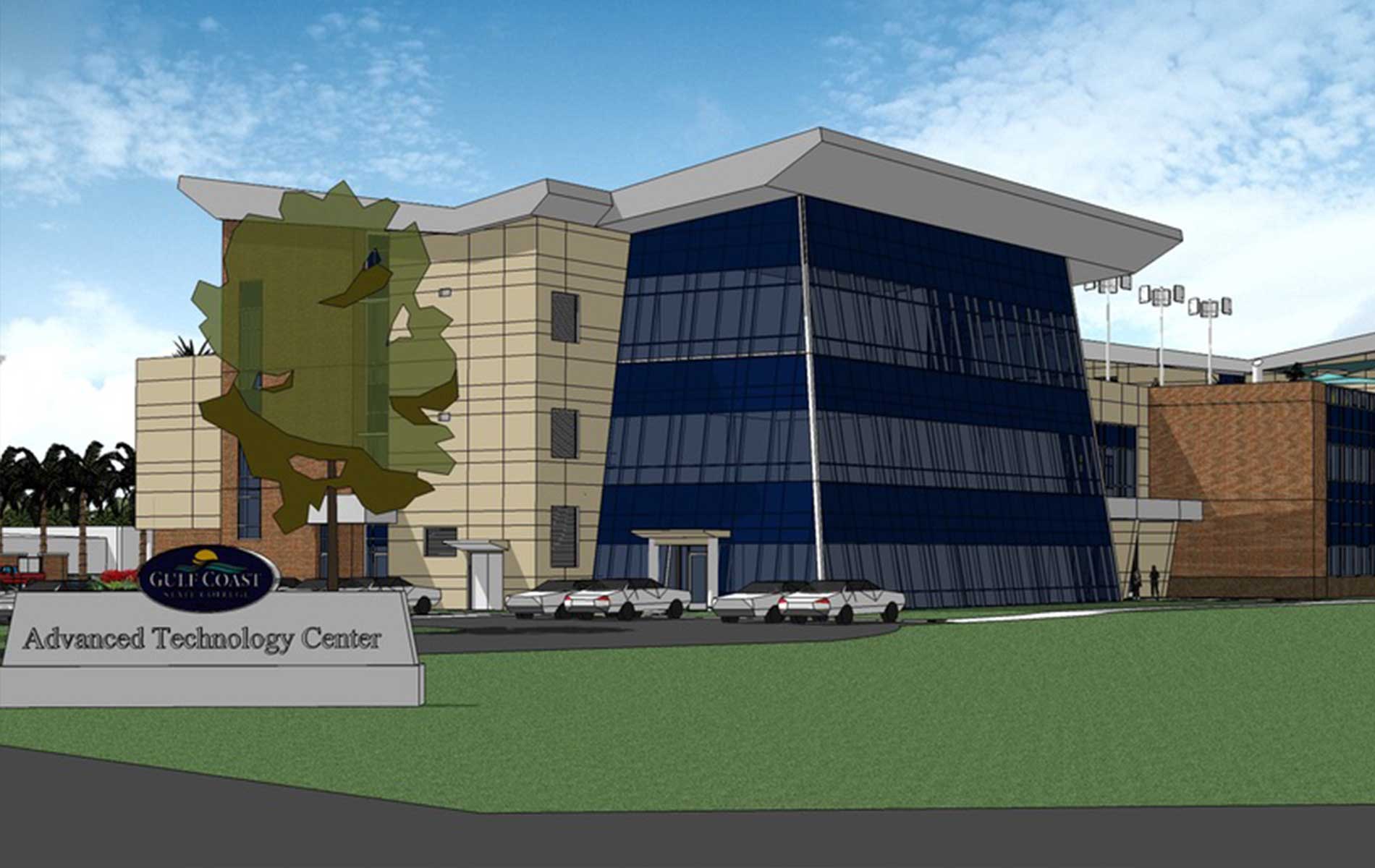
vie-magazine-hero-gulf-coast-state-college
A Community College Builds Opportunity
By Sallie Wolper Boyles
When it comes to economic development, coastal communities can no longer get by on their good looks alone.
Like a pretty face, beautiful scenery attracts lookers to the Florida Panhandle, but before making any kind of long-term commitment, today’s investors require an infrastructure that embraces technology. For that reason, whether using or inventing the latest products and processes, both public and private sectors need an educational body that inspires innovation while offering targeted fields of study that produce a ready workforce.
Taking on that ambitious role, Gulf Coast State College (GCSC) is expanding with a $35-million state-of-the-art Advanced Technology Center (ATC) to open in fall of 2013 on the school’s main campus in Panama City. As college and community leaders profess, the ATC, a project attracting national attention, lies at the heart of Northwest Florida’s economic future.
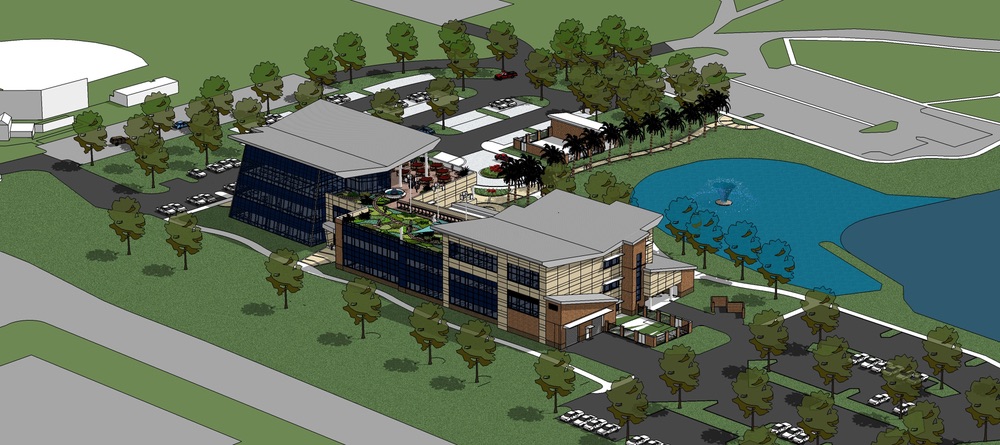
Architectural rendering provided by Florida Architects, Inc.
Does a community college, in fact, have the power to fuel a region’s economy?
According to Drs. Jim Kerley, president of GCSC, and Stephen Dunnivant, interim dean of the ATC, no one should underestimate what the institution brings to the table. Demonstrated by its varied group of stakeholders (corporate executives, entrepreneurs, financiers, top military personnel and contractors, local government officials, and civic leaders), the school’s sphere of influence is notable.
Every facet of the ATC’s blueprint, in fact, represents a collaborative effort. “At its inception in 2004, we brought in design consultants,” says Kerley, making it clear that the building itself represents an enormous undertaking. “Educational facilities don’t typically consult with anyone.”
Consequently, whether deemed a trade school, a stepping-stone to a four-year or professional degree, a mechanism of continuing education and job training, or a technology think tank, the ATC is being positioned as the region’s most promising gateway to a better quality of life for those who pursue the opportunities it offers. To move ahead with that purpose, the college’s administration and partners have assumed a future-forward perspective that, in some aspects, seems vague because of the inevitable changes that come with technology.
Their current focus or “anchor,” according to Dr. Kerley, is a five-year (2008–2013) strategic plan that cements the school’s commitment to its students and, correspondingly, to the communities within Bay, Franklin, and Gulf counties. “While addressing the interests of local businesses, municipalities, military bases, and the like, we have a missionary zeal for developing a global workforce,” says Kerley. “Our region has historically depended on construction, tourism, and the military, but diversity will be the key to our future prosperity.” On countless levels, the ATC is the critical component of that bold resolution.
GCSC’s administrators and faculty, therefore, wear many hats. Although its directors are too humble to refer to the ATC as a “think tank,” GCSC, nevertheless, facilitates conferences that promote idea generation and meetings of the mind. As service providers, they collaborate with citizens and experts to ensure that initiatives are on target and deliver what is promised. As leaders, they work alongside other influencers to promote economic development in Northwest Florida. Already a committed partner of area chambers of commerce and economic development offices, the school’s administration, eagerly combining forces to recruit new industry to the area, recently participated in a commission to entice a solar energy company to the region.
“In the final phase, our area was one of three finalists nationwide under consideration because of the ATC,” says Kerley, revealing that the workforce issue was a deciding factor. “If the ATC had been completed, I have no doubt we would have been chosen.”
“Dr. Kerley has given us the vision to lead by concentrating our resources,” injects Dunnivant. “With our Advanced Technology Center under way, we are in an unprecedented environment for fostering growth as a regional educational hub.” To lure big industry and serious venture capitalists, he adds, the concerted effort must stretch beyond any one group or city.
“Our region has reached a tipping point,” Kerley continues, meaning that the economy, which is dependent upon growth, could go either way. “The competition we face is tough.” Indeed, the complex decision to locate a business in an area entails many factors—tax rates, way of life, quality of schools, and the job force. “Leaders in education, business, and government must work as a team to win new opportunities, and many expect to be involved.” The days when one or a few power brokers sealed the deal are over.
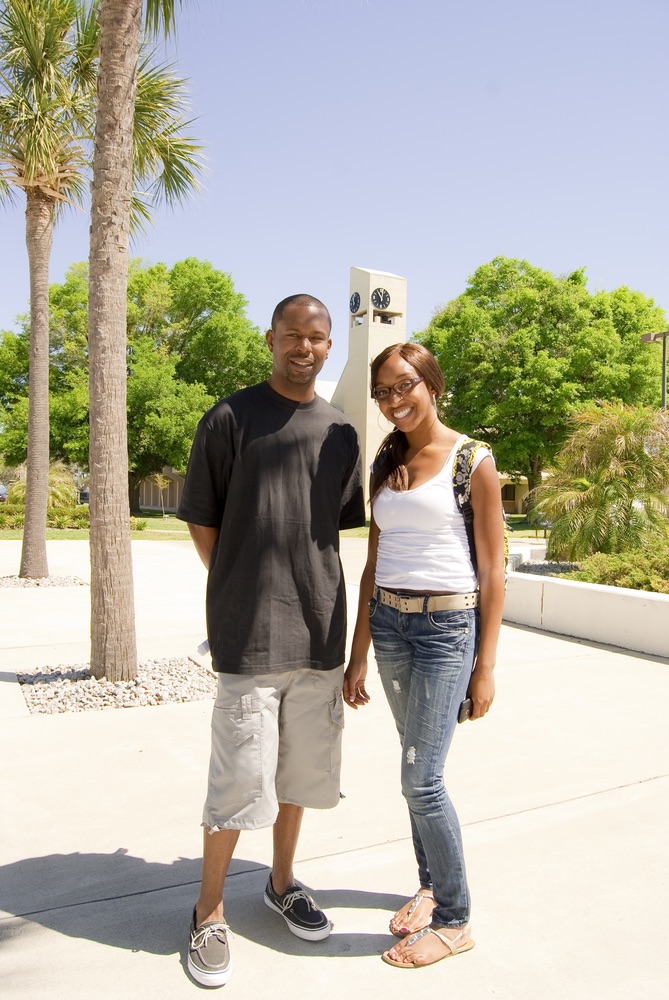
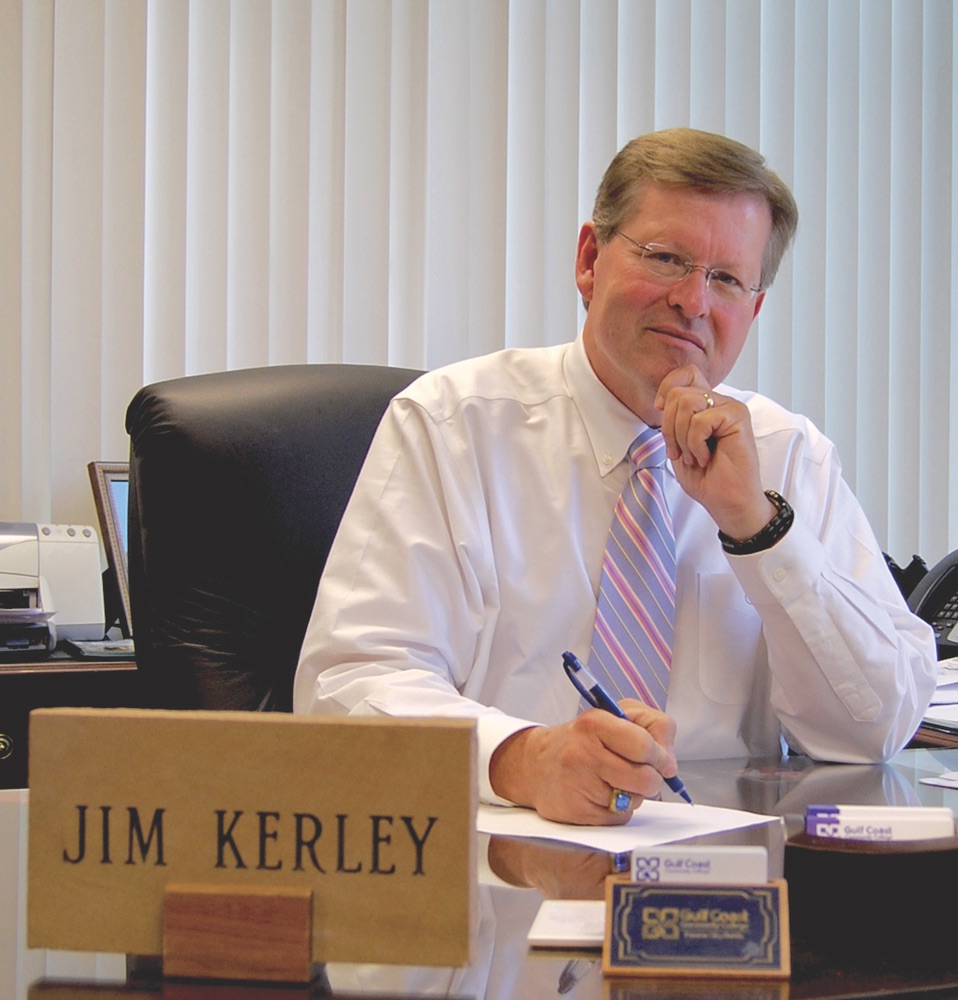
Along with new industries and business expansions, entrepreneurs and creative thinkers are critical to a thriving economy. Fortunately, the aesthetic qualities of the Gulf Coast have been a magnet to people who are uniquely gifted and inspired. “The intellectual property here is enormous,” says Dunnivant. “Our role is to tap into it.”
To do just that, Drs. Dunnivant and Kerley champion educational avenues that nurture talented individuals, including those who would not flourish in formal classroom settings. Referring to the United States’ traditional modes of teaching and narrow educational tracks, Dunnivant says, “We’ve been too focused on the academic elite.”
A global initiative of GCSC, and certainly one of the ATC, is to deliver educational opportunities that evoke passions and creativity among those who think in different ways. The concept of learning by doing comes up frequently. All along, to inspire students, schools are encouraged to introduce a broader range of career options sooner rather than later. Dr. Kerley refers to an endeavor that builds alliances with teachers and career counselors from kindergarten through high school. Primarily, students who exhibit potential are identified and shown career paths as soon as possible. Additionally, rather than postponing their ambitions, young people have greater leeway to pursue their interests before graduating high school.
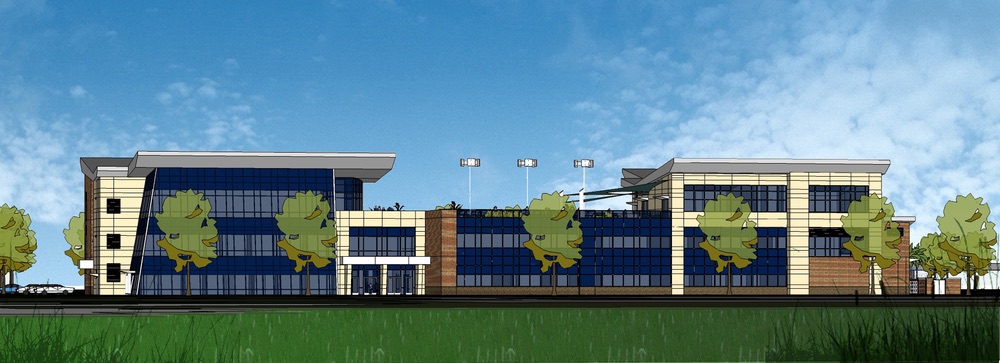
Architectural rendering provided by Florida Architects, Inc.
“In Northwest Florida, we have the highest penetration of kids in high school taking college courses than anywhere else in the state,” says Kerley. “By intertwining our efforts as proponents of education, we’re creating career academies that flow to college.”
“Florida also has one of the best matriculation systems in the country,” adds Dunnivant. “In an even flow from high school to a technical school to a university, students can earn any degree.” Anyone can cross the threshold to higher learning by entering a community college.
Highlighting that the community college’s purpose is to grant access, Dr. Kerley recalls a GCSC student who struggled at first to meet university requirements, but his accomplishments took him on to medical school. Equally impressive to Kerley is the story of a woman who lived in her car while attending GCSC, and today is a respected influencer in the local community. Kerley says he would never have guessed her background if she hadn’t told him.
Perhaps most notable is the woman who could barely write when she entered GCSC. Throughout her life, her mother said that she wasn’t smart enough for college. From her personal commitment and her teachers’ unyielding dedication, she graduated with a degree and, more importantly, earned her self-respect as a role model for her children. An inclusive learning institution, Dr. Kerley concludes, profoundly changes lives.
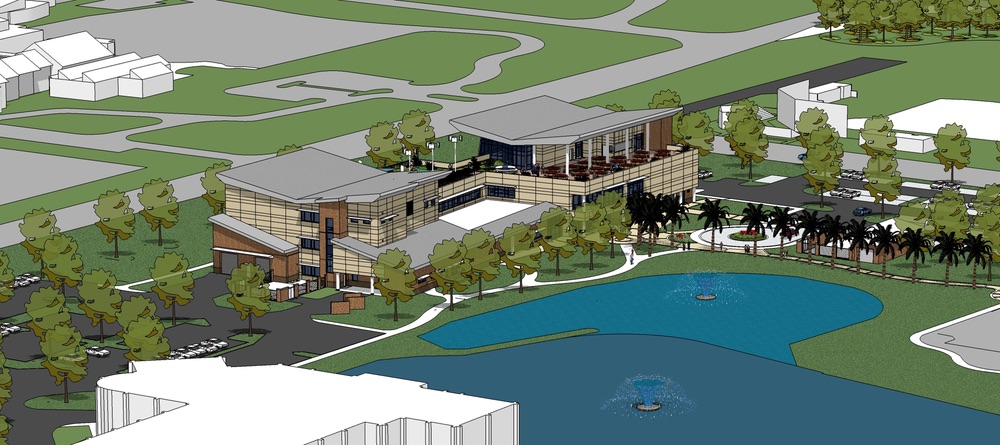
Architectural rendering provided by Florida Architects, Inc.
Today, accessibility is also a function of time and place, so a growing number of e-learning options accommodate busy schedules. GCSC, in fact, has experienced a 94 percent increase in online class enrollment over the past three years. The trend poses an array of possibilities for hybrid classrooms as the ATC and its next-generation technologies emerge.
Whatever falls under the massive ATC umbrella, GCSC promotes hands-on, applied learning techniques and experiential classrooms. “Employers need people who can solve problems,” says Dunnivant, who is an advocate for classes that introduce subjects by posing problems to solve. The purpose is to stimulate critical thinking rather than presenting facts that students must memorize and regurgitate. “Students are not empty vessels that must be filled,” he says.
The physical structure of the ATC—an 80,000-square-foot facility that is seeking a Gold certification by the U.S. Green Building Council’s LEED (Leadership in Energy and Environmental Design) rating system—is also intended to stimulate critical thought and open discussions. Rather than using walls and halls to create barriers that isolate different departments and separate students from teachers, interiors will feature shared spaces and inviting corridors, where people are encouraged to engage one another. Traditional campuses erect educational silos in which different areas of study function independently from one another; in the ATC, disciplines will merge for the benefit of all.
While conducting a search on his laptop, an advanced IT student might interact with a high school student in a dual enrollment program, an instructor from another department, and a business owner seeking help on a private project. Conducive to gathering and sharing ideas, the ATC’s cutting-edge blueprint could very well remain a work in progress, accommodating changing needs, over the life of the building. Planners, however, are counting on one given element: the conference room with fabulous floor-to-ceiling water views!
The curriculum—which will be updated and revised as trends dictate—promises an expanded selection of bachelor of applied sciences courses in areas like technology security, sustainable design, and mechatronics (a mix of engineering specialties and manufacturing applications). “Previously, the workforce would tell us which courses we needed to teach,” says Kerley. “We’re now looking to drivers of innovation to guide us.” Interestingly, GCSC, considered neutral territory where stakeholders can gather, has positioned the ATC to breed ideas as well as to help them take root.
If this vision for the ATC appears grand, it is far from elitist. The ultimate purpose is to create opportunity for the people of Northwest Florida—all to elevate their standard of living and enhance their quality of life. Coming from humble backgrounds, Dr. Kerley, who was raised in a poor, rural area of Tennessee, and Dr. Dunnivant, who grew up on welfare and lived in New York housing projects, can appreciate firsthand the value of an open door.
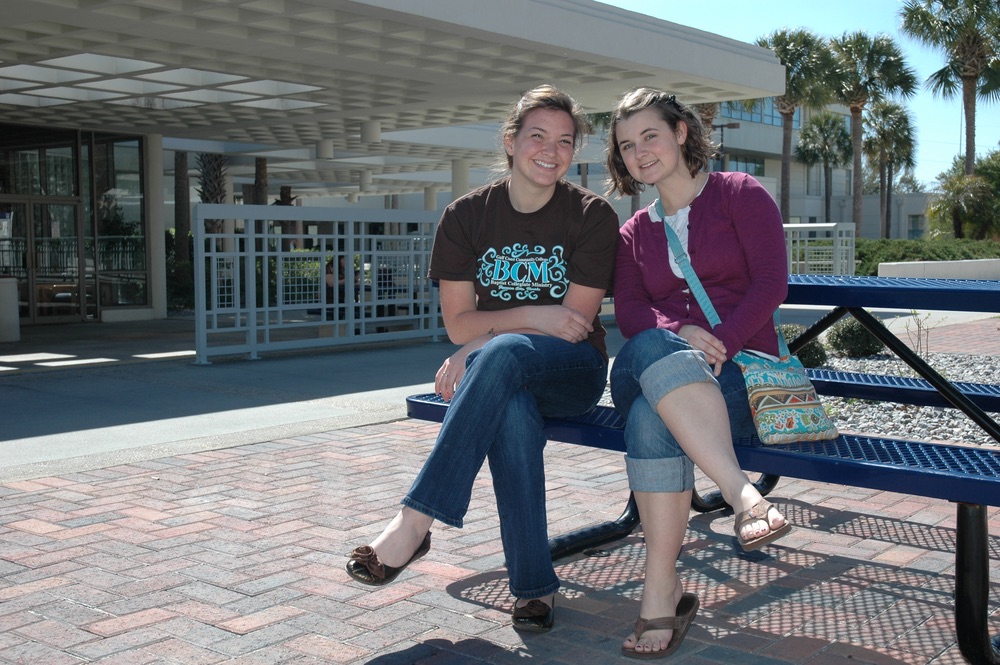
Kerley saw his parents struggle because they did not have the benefit of education. “My dad’s childhood home was so remote that to go to high school, he would have had to enroll in boarding school,” Kerley explains. “As a little girl, my mom had to stay home to care for her younger siblings. That’s why I have a heart for students who need that extra help.” His first class while pursuing his MA in Teaching at The Citadel in Charleston covered community college administration. “I set an early goal to be a community college president,” says Kerley, who knew that his calling was to make a difference through education.
He went on to earn his PhD in Educational Administration and Supervision of Higher Education from Florida State University. From teaching he migrated to administration, and with a depth of experience presiding over community colleges in Kentucky, Dr. Kerley took over as the fifth president of GCSC in 2007. Downplaying his personal contributions, including his proven capacity to lead ATC initiatives, Dr. Kerley applauds the devotion of his faculty and staff. “I see a real caring and love for our students,” he says. “They will bend over backwards.” When weighing any decision, Kerley insists that one question prevails: Is it good for the students?
Dr. Dunnivant concurs. “Some of the most talented people from business and industry are committed to our school.”
Through solid leadership and dedication to GCSC, a regional institution, the ATC, a project believed to have national significance, has emerged. What, then, does the future hold for the school and the people of Northwest Florida? While the details will take shape over time, the architects are quite optimistic about the foundation they’re building today.
— V —
Advanced Technology Center Highlights
$35-million facility on the Panama City campus
Opening April 2013
Offering bachelor’s degrees in technical fields and applied sciences in partnership with area universities
Fostering instructional innovation for K–20 educators through teaching and learning centers
Driving and accelerating regional economic growth
Serving Bay, Franklin, and Gulf counties
Panama City Campus 5230 West Highway 98, Panama City, FL 32401- Phone: 850.769.1551
Gulf/Franklin Center 3800 Garrison Avenue, Port St. Joe, FL 32456 – Phone: 850.227.9670
North Bay Center 637 Highway 2300, Southport, FL 32409 – Phone: 850.872.3878
Tyndall Education Center Tyndall Air Force Base, FL 32404 – Phone: (850) 283-4332
Website www.gulfcoast.edu
Share This Story!
KEEP UP WITH THE LATEST STORIES FROM VIE
















































































































































